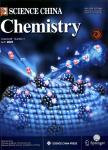版权所有:内蒙古大学图书馆 技术提供:维普资讯• 智图
内蒙古自治区呼和浩特市赛罕区大学西街235号 邮编: 010021

作者机构:School of Chemistry & Molecular Engineering East China University of Science and Technology Key Laboratory for Advanced Materials Shanghai Key Laboratory of Functional Materials Chemistry Feringa Nobel Prize Scientist Joint Research Center Frontiers Science Center for Materiobiology & Dynamic Chemistry East China University of Science and Technology
出 版 物:《Science China Chemistry》 (中国科学:化学(英文版))
年 卷 期:2025年
核心收录:
学科分类:081704[工学-应用化学] 07[理学] 070304[理学-物理化学(含∶化学物理)] 08[工学] 0817[工学-化学工程与技术] 080501[工学-材料物理与化学] 0805[工学-材料科学与工程(可授工学、理学学位)] 0703[理学-化学]
基 金:supported by the National Natural Science Foundation of China (22176058) the Science and Technology Commission of Shanghai Municipality (24DX1400200, 22ZR1416800, 23ZR1416100) the Program of Introducing Talents of Discipline to Universities (B16017) the Fundamental Research Funds for the Central Universities (222201717003)
摘 要:Ordinary metal salts have become a promising afterglow material because of the characteristics of wide sources, low cost, and easy availability. However, their extremely weak afterglow efficiency makes them rarely used in practical applications. In this study, we proposed a ligand engineering strategy to greatly enhance the afterglow efficiency of metal salts. Al2(SO4)3, as a typical metal salt, has only a photoluminescence quantum yield(PL QY) as low as 0.1% and an unmeasurable phosphorescent QY. After doping with dual organic ligands, the PL QY of Al2(SO4)3has increased by nearly 200 times, reaching 19.90%. Meanwhile, the afterglow intensity of Al2(SO4)3has increased by approximately 20 times, accompanied by a great increase in phosphorescent lifetime from 416.15 to 2870.08 ms(a about 7-time increase). The enhancement mechanism of afterglow efficiency is ascribed to the fact that the excited electrons from the dual ligands can be directly captured by oxygen defects(trap), then transferred to the emitters(Al3+ions), and ultimately achieving efficient afterglow luminescence. This study utilizes ligand engineering strategy to improve the afterglow luminescence efficiency of metal salts, achieving their applications in deep ultraviolet(UV)-excited light emitting devices and visual ethylene glycol recognition.